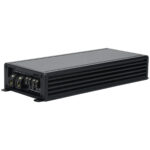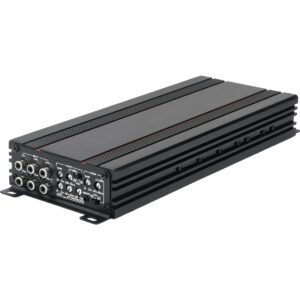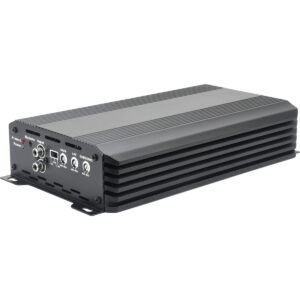| Specification | MD750.1 (Monoblock Amplifier) |
|---|---|
| Class | D |
| Working Voltage | 9 – 16V |
| Power @ 1 Ohm | 640 Watts x 1 Channel |
| Power @ 2 Ohm | 423 Watts x 1 Channel |
| Power @ 4 Ohm | 265 Watts x 1 Channel |
| Frequency Response | 10Hz – 250Hz |
MD750.1 | 750 Watts Monoblock Car Amplifier – Class D
"*" indicates required fields
Step 1: Contact Us
Reach out to us via our website, email, or phone to share your purchasing requirements, including product types, quantities, and any branding or customization needs.
We are a company specializing in wholesale business and do not accept retail orders. Our minimum order quantities are as follows:
- Subwoofers: Minimum order quantity of 250 units
- Car speakers: Minimum order quantity of 300 pairs
- Car amplifiers: Minimum order quantity of 500 units
Pricing is determined based on the order quantity and will be quoted by our customer service team. Since our primary clients are businesses with their own brand or those looking to establish their brand, prices are not displayed directly on the website. Thank you for your understanding!
Step 2: Discussion and Confirmation
Our sales team will get in touch with you promptly to understand your specific needs and provide an initial quotation. If customization is required, we can offer professional advice, including product design and technical support.
Step 3: Order Confirmation
Once the order details are finalized, we will issue a formal contract and invoice, specifying all order details, including pricing, delivery time, and logistics arrangements.
Step 4: Payment and Production
After receiving the required deposit as per the contract, we will proceed with production. The production timeline depends on the order quantity and product type and will be clearly stated in the contract.
Step 5: Delivery and After-Sales Support
Once production is complete, we will ship the products using the logistics method specified by the client and provide necessary after-sales support.
1. Determine Shipping Methods
Select the appropriate shipping method based on customer requirements and order volume:
- International Shipping:
- Sea Freight: Best for large orders, offering lower costs but longer transit times.
- Air Freight: Suitable for small, time-sensitive orders or high-value products, though more expensive.
- Express Delivery: Services like DHL, FedEx, and UPS are ideal for samples or urgent shipments.
- Domestic Shipping:
- Use local logistics providers for truck or rail transport, or opt for express couriers.
- Choose cost-effective, time-efficient shipping services based on the delivery location.
2. Decide on Shipping Costs
Set flexible payment terms for shipping costs based on customer type and agreement:
- FOB (Free on Board):
Suppliers are responsible for delivering goods to the specified port, while customers handle the freight from the port to their destination. Suitable for customers with established logistics networks. - CIF (Cost, Insurance, and Freight):
Suppliers cover freight and insurance costs to the destination port. Ideal for smaller clients who prefer reduced shipping complexity. - EXW (Ex Works):
Customers handle all shipping costs and risks starting from the supplier’s factory. This option works well for clients with their own freight forwarders.
3. Partner with Reliable Logistics Providers
Collaborate with professional logistics companies or freight forwarders:
- Key Criteria for Selection:
- Timeliness: Ensure goods are delivered within the agreed timeframe.
- Coverage: Logistics providers should cover the customer’s destination country or region.
- Transparent Pricing: Provide clear and competitive rates without hidden charges.
- Insurance: Offer freight insurance to safeguard against transit risks.
- Recommended Partners:
- International Couriers: DHL, FedEx, UPS
- Sea Freight Forwarders: Maersk, COSCO, CMA CGM
- Local Logistics Providers: Select dependable local companies based on the delivery region.
4. Packaging and Shipping Safety
Ensure products are well-protected during transit:
- Packaging Standards:
- Use sturdy cartons, wooden crates, or pallets for packaging.
- Add protective materials like foam or bubble wrap for fragile items.
- Clearly label the packaging with product details, quantity, weight, and shipping marks.
- Freight Insurance:
- For large orders, recommend freight insurance to protect against potential losses or damages during transit.
5. Provide a Clear Shipping Process and Support
- Customer Choice of Shipping Method:
Offer multiple shipping options for customers to choose from based on their budget and delivery timeline. - Real-Time Tracking:
Provide tracking numbers and updates in coordination with logistics providers. - After-Sales Support:
If issues such as delays or damages occur during transit, communicate with customers promptly and offer solutions.
6. Manage Customs Clearance
For international shipping, ensure smooth customs clearance:
- Prepare Documentation:
- Commercial Invoice
- Packing List
- Certificate of Origin (if required)
- Bill of Lading
- Assist with Customs:
- Support customers in resolving customs-related issues.
- Advise clients to familiarize themselves with local import duties and regulations.























